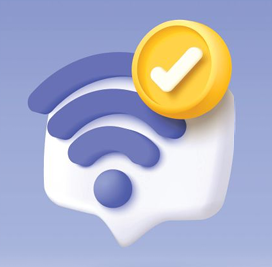When being asked to provide realtime, it is the reporter’s responsibility to make sure that happens. Clients pay hundreds of dollars for this service and expect it to work. They don’t have an understanding of all the challenges that may come in providing this service, nor do they care. So, let’s discuss a few things that may help reporters ensure delivery of their realtime product.
Here are a few things I highly recommend not to do.
- Do not connect to county or city or hotel WiFis, or anything of the sort. These entities do things like limit the bandwidth, particularly to people who are streaming, and while it’s more to stop video streams, realtime could be recognized as a stream since it’s continuous.
- Public WiFi oftentimes cuts connections off after a couple of hours. Have you ever been in a hotel where just searching Google feels like you’re on dial-up? Well, that’s because sometimes the company makes it drag and will try to get you to buy the higher speed package. This is not a reliable choice.
- Cell phones should not be used either as a hotspot or to create a local area network (LAN) to provide realtime. Have you ever used a cell phone and dropped a call? Exactly! This is not a reliable choice.
Should reporters need to provide realtime over the Internet and a hard-wire connection is not possible, I highly recommend hotspots (note that while the hardware for hotspots are mobile devices, this should be a separate device from a mobile phone). I have used the Verizon MiFi for about seven years, and it has proven quite reliable. Verizon has the broadest band of coverage in the nation; however, AT&T may work better in some areas of the country. Please do the research as to which provider may work best in that particular area. For example, I’ve heard that reporters in areas like Chicago and New York, which are crammed with high-rises, sometimes carry two and three hotspots.
Part of the key to delivering realtime every time is controlling all the things that are within the reporter’s control. If reporters use a router to provide a LAN for realtime or if they use a hotspot to provide realtime, those are their solid solutions, and they can use them in a variety of situations. I recommend hooking up a realtime feed for every job and carrying an iPad mini to connect to daily. Not only do reporters familiarity with the system by setting up every day, but, by controlling this one system, they then are in control of their process of elimination.
When requested to provide realtime, not only are reporters representing themselves and their firms, they are representing a nation of court reporters. Show up armed and ready for battle!
Christine Phipps, RPR, of North Palm Beach, Fla., is co-chair of NCRA’s Technology Committee. She can be reached at christine@phippsreporting.com.







